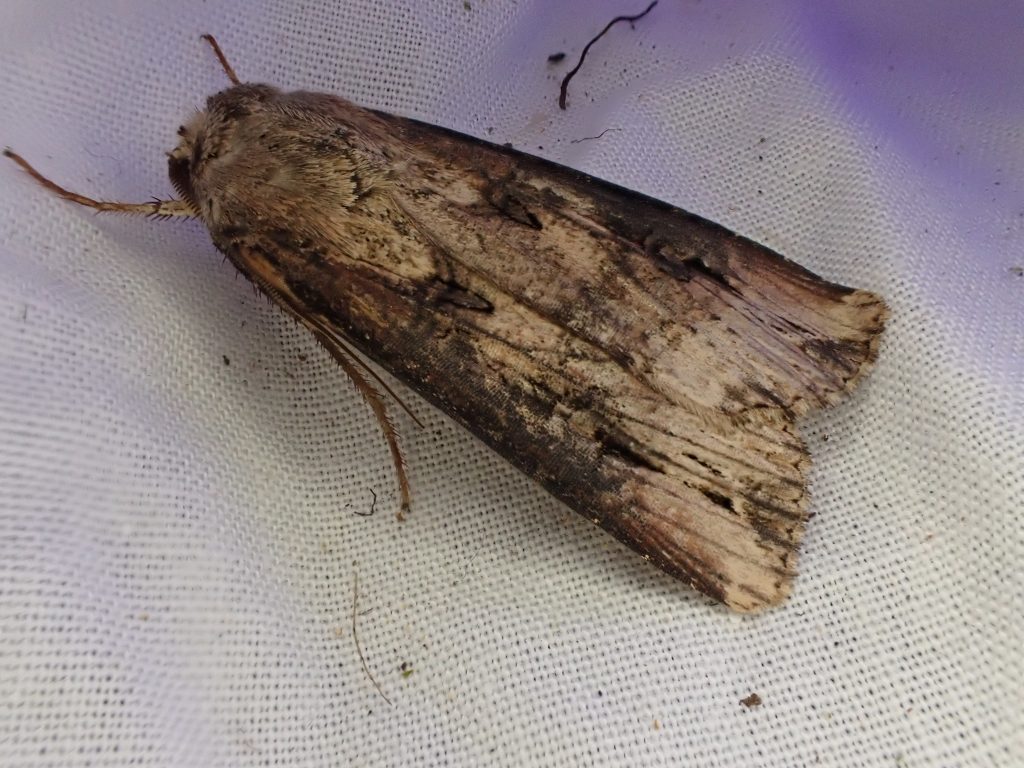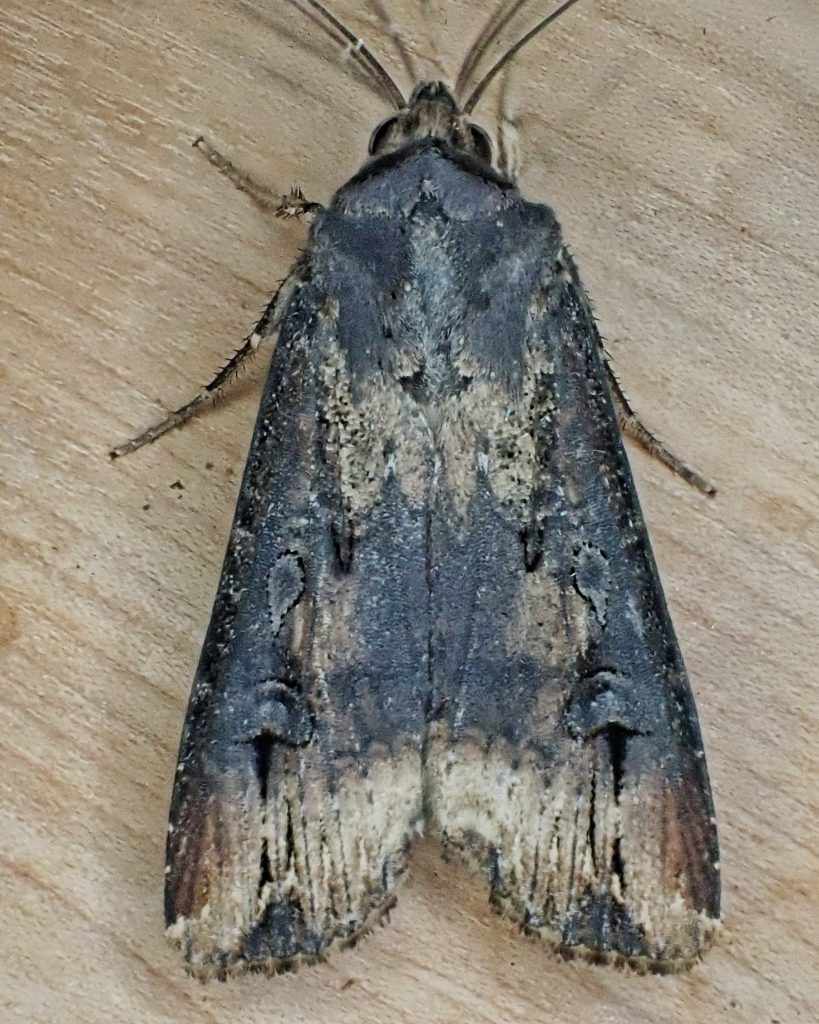
It is not entirely clear whether these handsome members of the family Noctuidae are native to North America, or were accidentally imported to this continent very early in its colonization by Europeans, but they’ve been reported here for as long as there has been reporting. They are a highly migratory species capable of very long, wind aided flights, and are sometimes a serious crop pest, though “In the Pacific Northwest, it is usually a minor pest, except during warm, dry years when it may attain epidemic outbreaks.” PNW Moths | Agrotis ipsilon
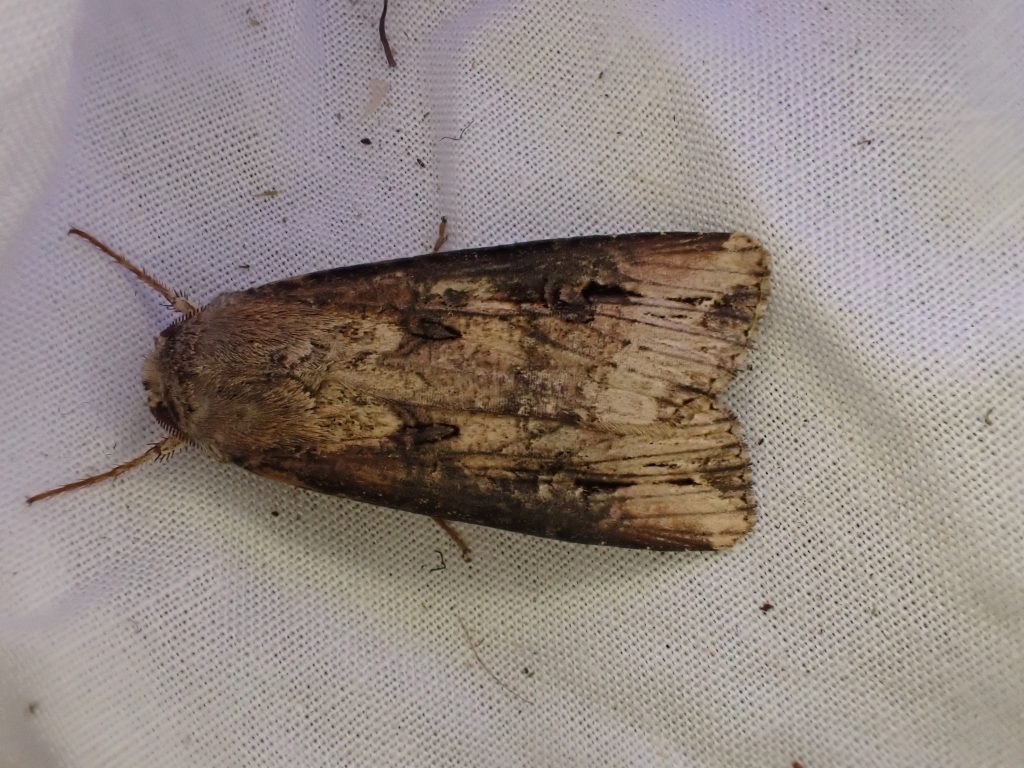
Description– “Adult: forewing yellowish-brown to purplish, shaded with dark brown to blackish along costa in male – or over most of wing to PM line in female; antennae bipectinate in male (only in basal half, simple at apical one-third (TT))- simple in female; small black wedge descends from reniform spot, and another black wedge ascends from outer margin (sometimes the two wedges meet to form an hourglass shape); AM and PM lines double; reniform, orbicular, and claviform spots outlined in black; hindwing dirty white with grayish-brown shading…Larva: body light gray to black on top, lighter below; two light stripes and two rows of small, black, raised bumps (tubercles) down center of back; cuticle covered with large and small granules; head brownish with many dark spots; sutures on front of head form inverted “V”.” Species Agrotis ipsilon – Ipsilon Dart – Hodges#10663 – BugGuide.Net
Similar species– “This species can be identified by the long wing that is blackish brown medial to the postmedial line and paler brown distally with three black wedge-shaped marks on the distal to the reniform spot. No other species in our area has this combination of features.” PNW Moths | Agrotis ipsilon
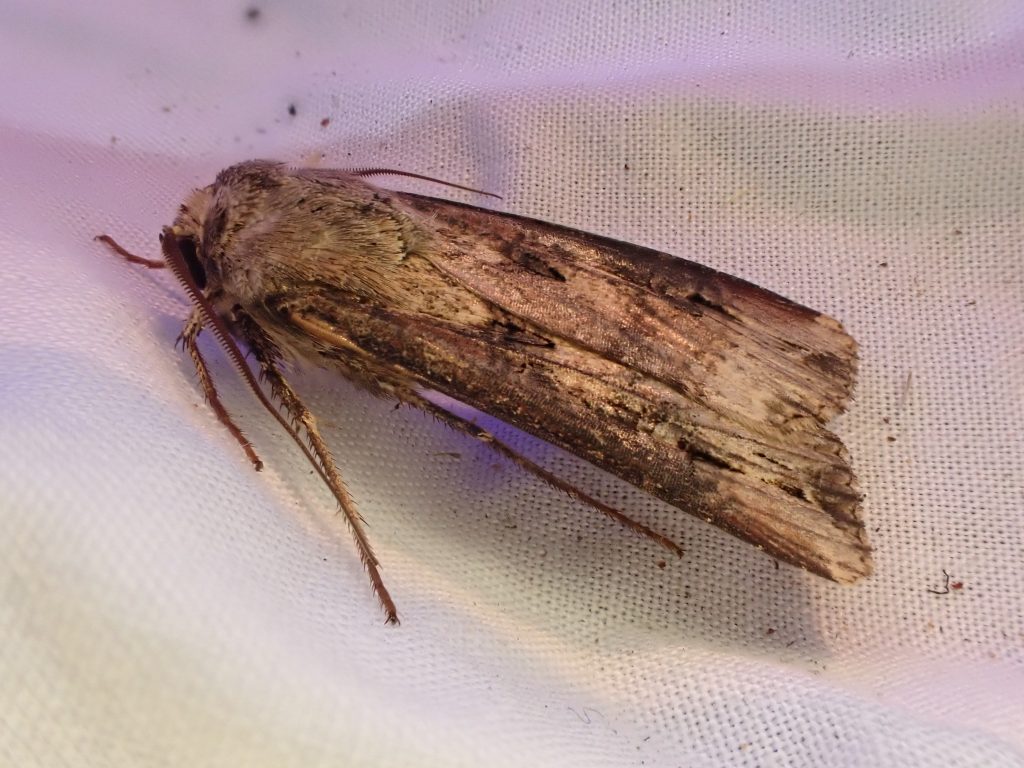
Habitat– “This species is migratory and distributed throughout most of the world. In North America, it over-winters in Mexico and the southern United States, migrating northward in the spring. Thus, this species is not a permanent year-round resident in the Pacific Northwest. It may become common in mountain meadows at higher elevations in late summer, particularly during warm, dry years. However, the primary habitat is disturbed agricultural and urban areas at low elevations both west and east of the Cascades, and it may attain epidemic outbreaks in these habitats.” PNW Moths | Agrotis ipsilon
Range– “This species is found throughout most of the world except in the arctic and subarctic zones of the Northern Hemisphere and Antarctica…Agrotis ipsilon is found throughout our region as far north as southern British Columbia.” PNW Moths | Agrotis ipsilon ; For more range information see Observations · iNaturalist
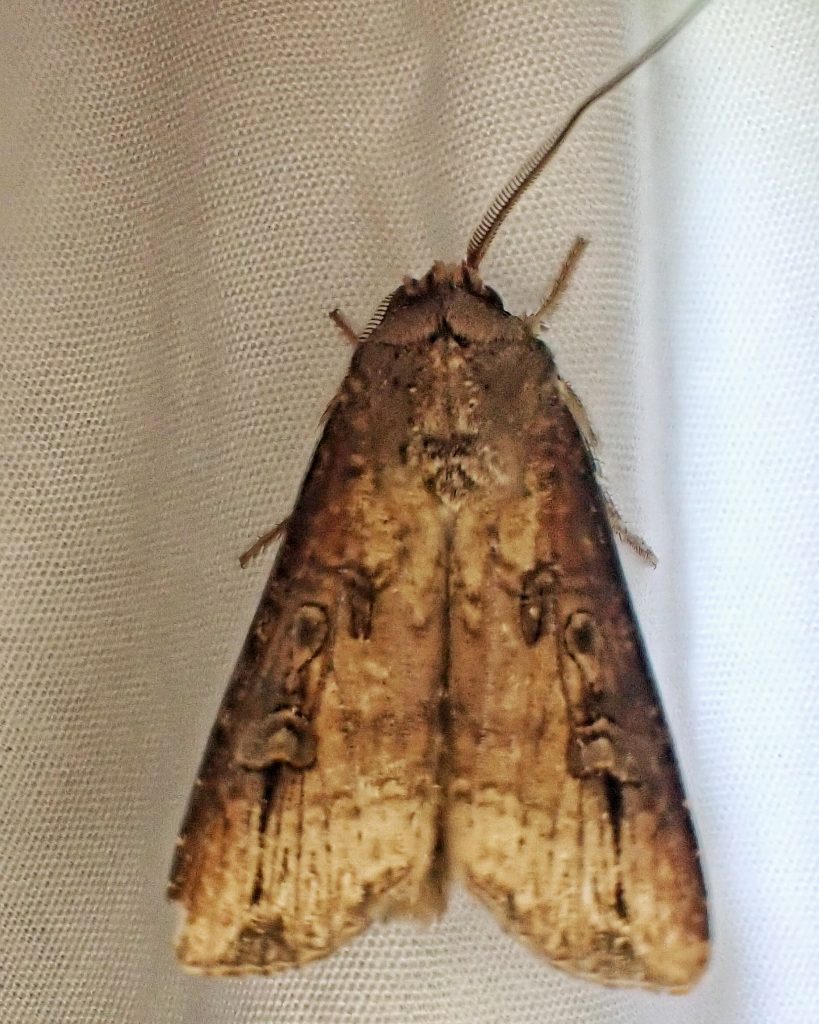
Eats– “This species is a soil-burrowing cutworm that feeds on general herbaceous vegetation in such families as Fabaceae, Asteraceae, Brassicaceae, Rosaceae, Solanaceae, Malvaceae, Chenopodiaceae, Apiaceae, and Poaceae, and is often a major pest in various agricultural crops. The larva is one of the few Lepidoptera that is largely immune to the pathogenic soil microbe, Bacillus thuringiensis.” PNW Moths | Agrotis ipsilon
Eaten by-Preyed upon by various birds, and the carabid beetles Perosticus permundus, Poecilus chalcites, and Cyclotrachelus sodalis, the earwig Labidura riparia, the lacewing Chrysoperla carnea, the assassin bug Zelus tetracanthus, and vespid wasps in Agelaia; larva parasitized by nematodes in Heterorhabditis, Hexamermis, Noctuidonema, and Steinernema, braconid wasps in Apanteles, Chelonus, Cotesia, Macrocentrus, Meteorus, Microgaster, Microplitis, and Zele, ichneumonid wasps in Campoletis, Ctenichneumon, Enicospilus, and Netelia, chalcidoid wasps in Trichogrammatoidea and Trichogramma, platygastrid wasps in Telenomus, and tachinid flies in Archytas, Exorista, Gonia, Lespesia, Linnaemya, Peleteria, Periscepsia, Turanogonia, Tritaxys, Siphona, Pseudogonia, and Phryxe. Most of this list came from the incredibly detailed treatment of this species at Agrotis ipsilon (black cutworm) | CABI Compendium.
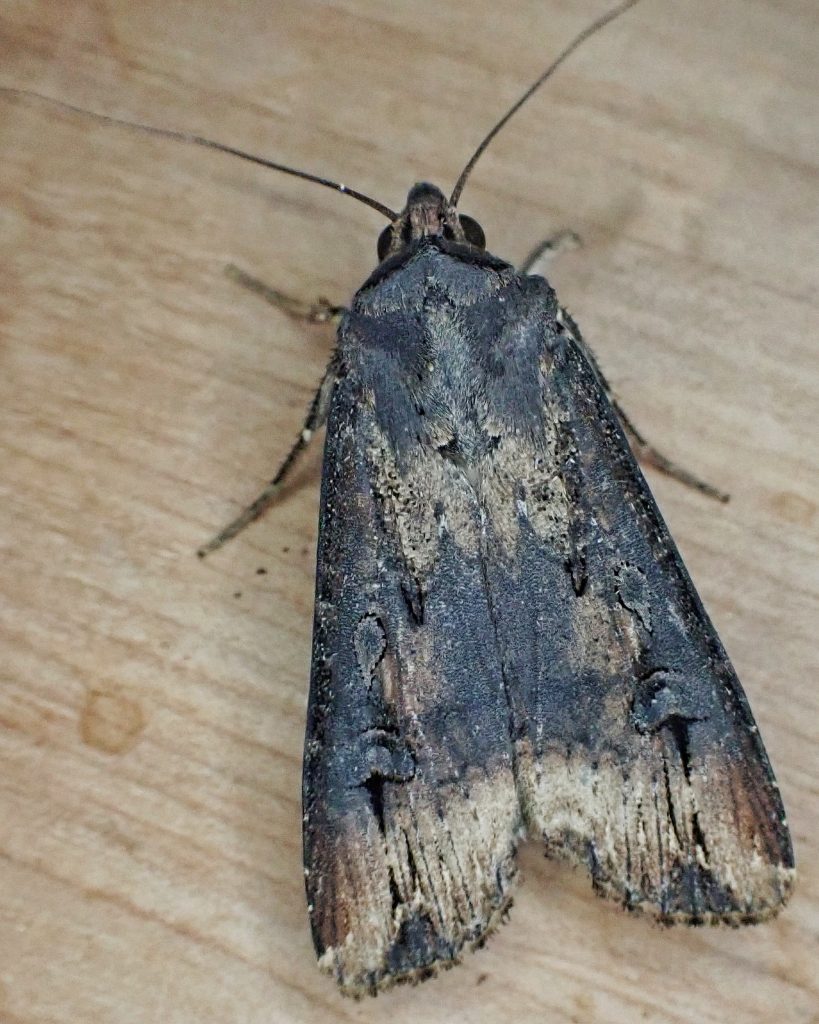
Life cycle– “Female black cutworm moths usually deposit eggs singly or a few (as many as 30) together. The eggs are attached firmly to a substrate. Preferred substrates are densely growing plants relatively low to the ground and fine-textured plant debris in untilled fields. Damp, low-lying areas within untilled fields are particularly attractive for egg deposition and larval survival. Egg placement varies with the plant species and may be on the petioles, lower leaf surface, or stem. The eggs hatch in 3-6 days and the larvae move into the soil where they remain during the day. Larvae move to the surface at night and feed on young plants. There are six or seven instars, depending on temperature and adequacy of diet. Depending on temperature, larvae begin to pupate in 25-35 days. Pupation occurs in the soil at a depth of 2.0 cm to 10.0 cm and the pupal stage lasts about 12-15 days.There may be several generations a year, but the spring generation is usually the most damaging because of the young vulnerable plants available at this time. When mature, spring-generation adults may stay in the same area, depositing eggs on weeds and grasses in crop lands, pastures, fence rows, vegetable fields, gardens, etc. Depending on geographical location, the mature spring generation may also move farther north on persistent low-level wind jets. Summer-generation adults will again deposit eggs on weeds, grasses, and turf grasses. The succeeding generation (autumn) can be found in habitats similar to those of the previous generations.A. ipsilon is chiefly a pest of seedling plants. Third to seventh instars become negatively phototaxic, and most feeding in these instars is nocturnal. Larvae construct burrows or tunnels in the soil about 2.5-5 cm deep. During the night, the larva cuts a (seedling) plant(s), drags it into this tunnel and feeds upon it during the day. During the photophase in all these habitats, the larvae will usually seek a soil depth of 2.5-10.0 cm, where a moisture line exists. However, during extremely wet conditions, larvae may exhibit climbing behaviour on vegetation.In the USA, deteriorating environmental conditions in late summer and early autumn trigger a southward movement on weather systems with near-surface northerly (southward displacement) airflow to the coastal regions of the Gulf of Mexico. Winter survival in the USA can occur north of the soil 0°C isotherm; this line will fluctuate annually in midcontinental USA.” Agrotis ipsilon (black cutworm) | CABI Compendium
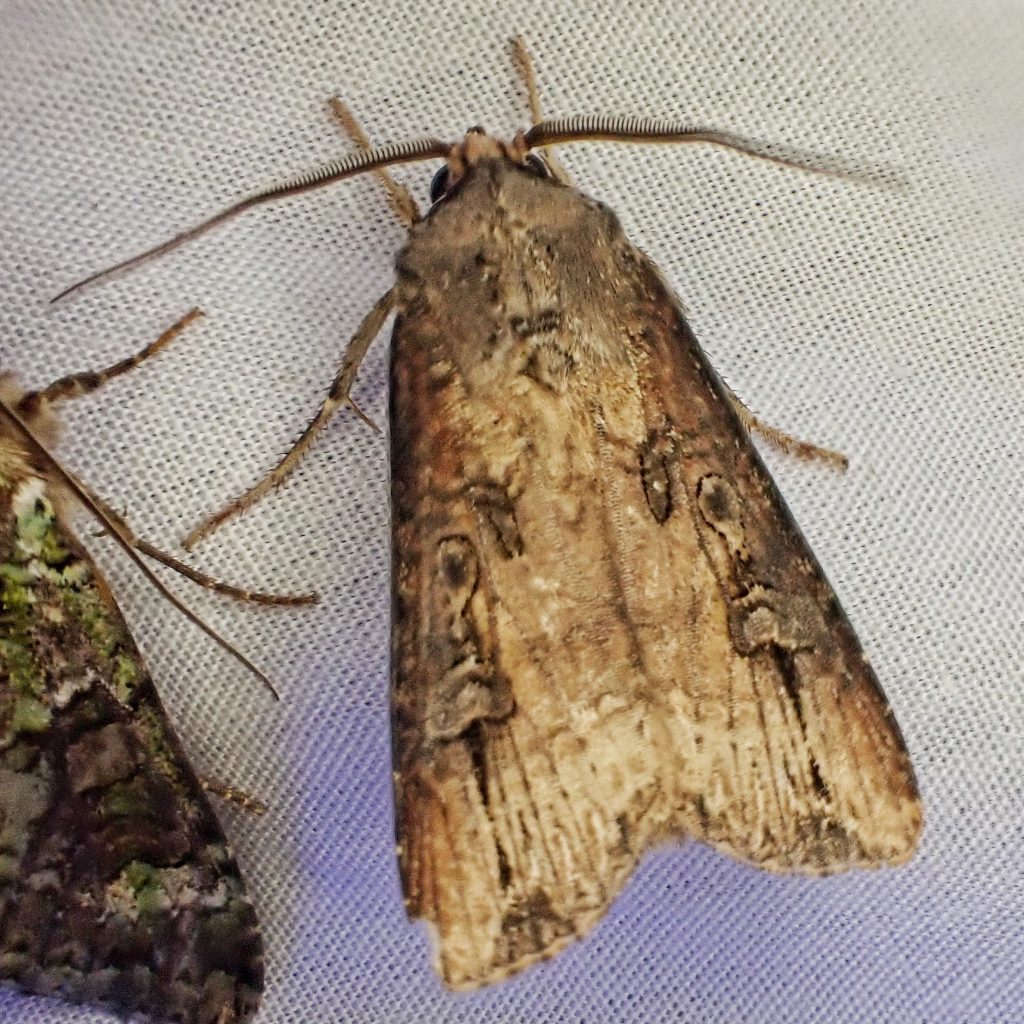
Adults active– “Adults are migratory, and migrate northward from Mexico in the spring with a return migration in the fall. Thus, adult moths that emerge in the Pacific Northwest in late summer are non-reproductive, and do not become reproductive until they return to agricultural lands in Mexico during the fall and winter. The moths have been collected beginning in May and June in our area, but do not become common until late July. This species flies into late fall, with records through November. They are nocturnal and come to light.” PNW Moths | Agrotis ipsilon
Etymology of names– Agrotis is from the Greek word for ‘field/countryman’, and alludes to the fact that larvae of most members of this genus can most frequently be found in open fields with abundant vegetation. The specific epithet ipsilon is a variant spelling of the Greek word for the letter ‘Y’, which was written like our ‘U’, which is a shape that can be found on the forewings of most specimens of this species.
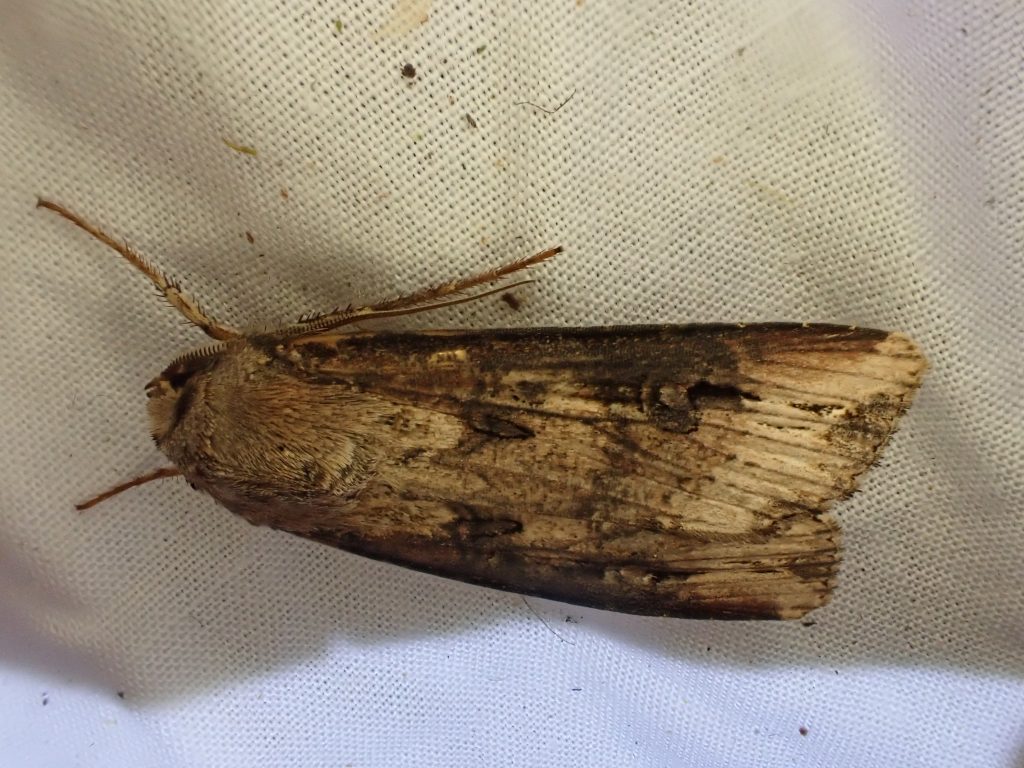
EENY-395/IN703: Black Cutworm, Agrotis ipsilon (Hufnagel) (Insecta: Lepidoptera: Noctuidae)
Agrotis ipsilon (black cutworm) | CABI Compendium
Species Agrotis ipsilon – Ipsilon Dart – Hodges#10663 – BugGuide.Net
http://mothphotographersgroup.msstate.edu/species.php?hodges=10663
